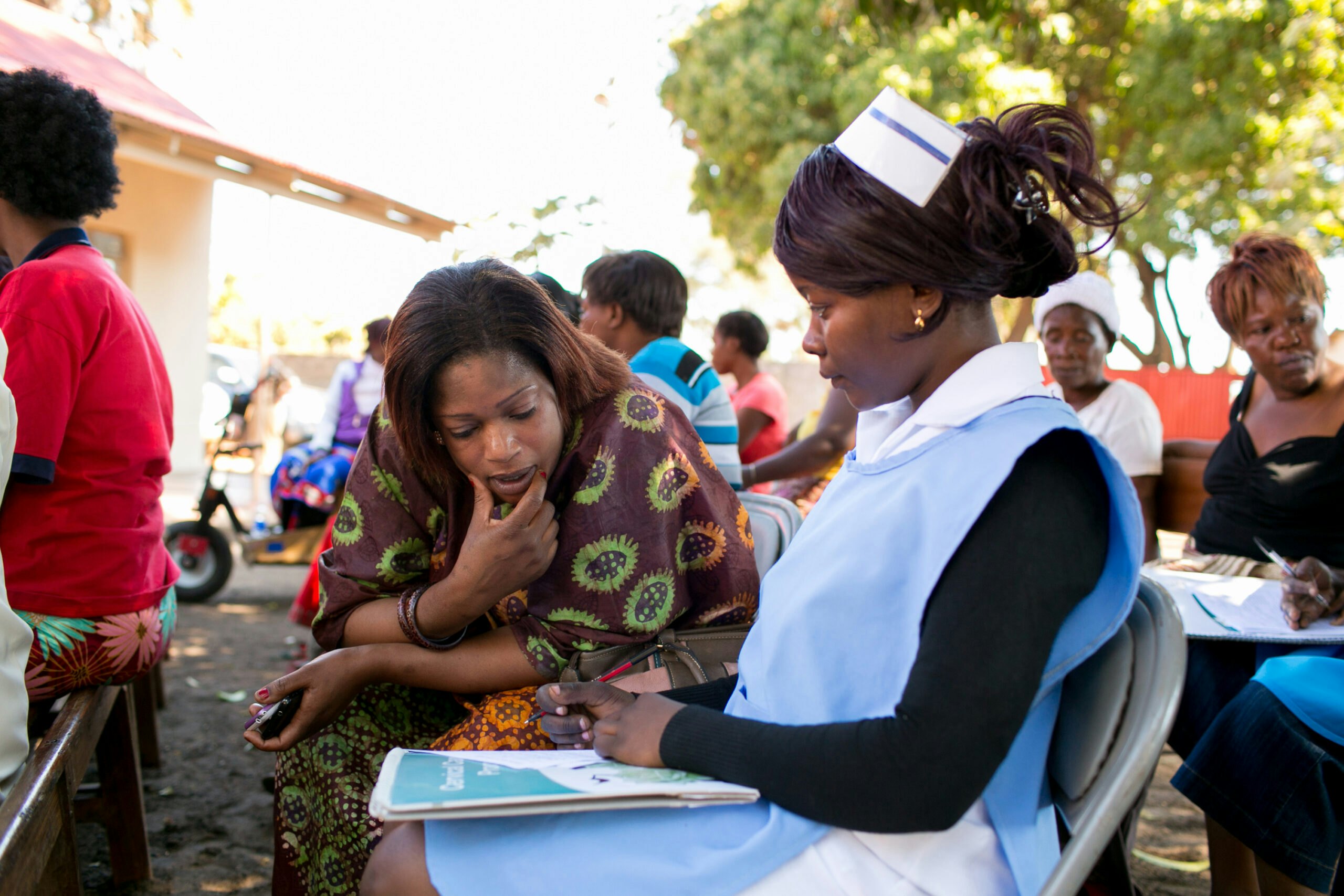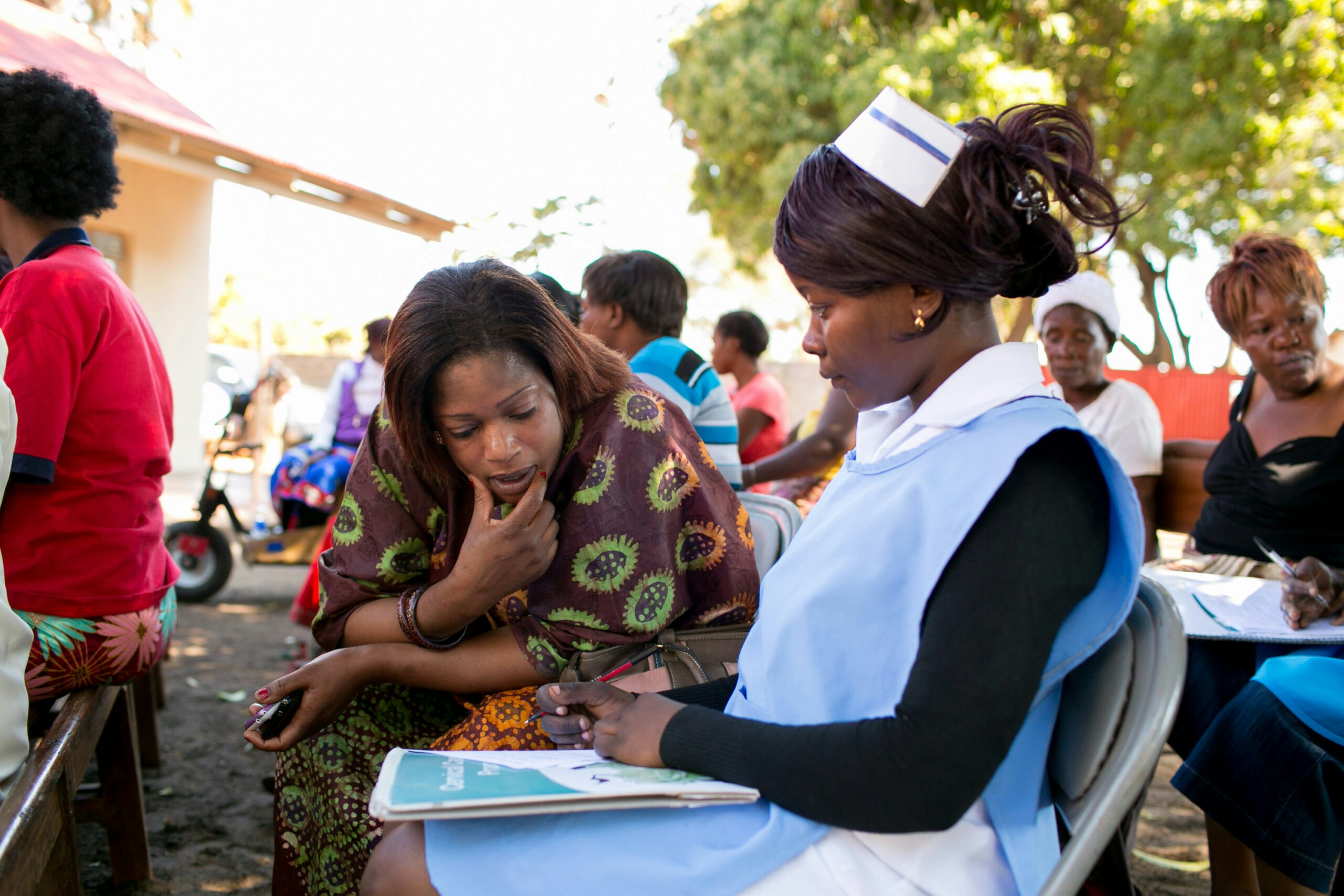On International Nurses Day, we celebrate Nyaradzo Mushonga and all the nurses around the world who are champions for women’s health.
It is just before break of dawn, the streets are awkwardly quiet and traffic is very low in the sleepy small farming town of Marondera, Zimbabwe. There are only few essential workers in sight. Among them is Nyaradzo Mushonga, age 26, who is waiting for transport to Chitungwiza, 43 miles away. Nyaradzo, a married mother of one, commutes every day from Marondera to Chitungwiza where she works as a nurse for the Organization for Public Health Interventions and Development (OPHID). Despite the distance, Nyaradzo is determined to show up for work every day to offer services to different clients at Seke North Clinic. On International Nurses Day, we celebrate Nyaradzo and all the nurses around the world who are champions for women’s health. This is her story:
Growing up I always wanted to be medical doctor, I studied science subjects in high school but failed to get the required points for entrance into medical school at University of Zimbabwe. I ended up enrolling for a degree in Nursing Science. I joined OPHID in 2018 as a nurse for the Cervical Cancer Screening and Treatment Project being supported by PEPFAR through USAID Zimbabwe as part of the Go Further partnership. My responsibilities are offering cervical cancer screening and treatment here at Seke North Clinic where we are mainly targeting HIV-positive women above 25 years old.

Seke North Clinic is a high-volume site and on a normal day I screen an average of 25 women for cervical cancer. Additionally, we have managed to create a one-stop shop for clients so I also dispense ART [antiretroviral treatment] medicines. Before the screening, I provide health education, sharing knowledge on what it means if my client is positive for precancerous lesions. For cervical cancer screening I do a procedure called visual inspection with acetic acid and cervicography (VIAC), a method we use to detect precancerous lesions. If I identify any clients with pre-cancerous lesions that I can treat on the same day, I administer cryotherapy, which is a treatment method of freezing the lesions with nitrous oxide gas. However, if the lesions are too big, the client will require loop electrosurgical excision procedure (LEEP) treatment which should be done by a medical doctor, so I refer to them to Chitungwiza Central Hospital. When the day ends after screening, I sterilize the equipment I used with an auto cleave machine, document all the day’s activities, and plan for the next day.

Meeting different women each day and helping them fight cervical cancer inspires me to do more and gives me a sense of purpose. After the day ends, I monitor myself to check if I have managed to surpass the organizational set targets [for number of women screened and treated] and currently, I have been surpassing all of them. Hence, I started my own innovation, my own monthly targets to surpass the organizational targets. I created a cumulative graph to monitor how far I have gone in reaching more women.
Seke North is a high-volume clinic but the waiting area is small. Now due to COVID-19, it can accommodate fewer clients because of social distancing guidelines. Most of the clients would end up waiting outside, and some would get impatient and leave. After discussing this challenge with the Nurse-in-Charge the VIAC waiting area was extended and I really thank him for the support. Despite all the setbacks due to COVID-19, new clients are still coming to be screened. When the pandemic started, Seke South, our sister clinic, was turned into a COVID-19 center and all the VIAC clients were being sent here so I screened so many clients at that time.

The cervical cancer screening and treatment program is really a blessing here in Zimbabwe. Due to the prevailing economic crisis, most women fail to access health services. Our existence ensures the continued provision of the much-needed cervical cancer prevention and treatment services freely. My wish is to see the program expand to other districts and I also hope for a world where these services are accessible to any woman who wants them.
Despite the wide-spread availability of cervical cancer screening and treatment programs in most developed countries, the morbidity and mortality rates of cervical cancer in Zimbabwe are still very high. Global trends show that most countries with the highest rates of cervical cancer are in Africa. Since 2018, with support from PEPFAR through USAID Zimbabwe, as part of the Go Further partnership, OPHID has collaborated with the Ministry of Health and Child Care in 24 districts to increase the availability and accessibility of high-quality cervical cancer screening and treatment services for HIV-positive women in Zimbabwe.




























